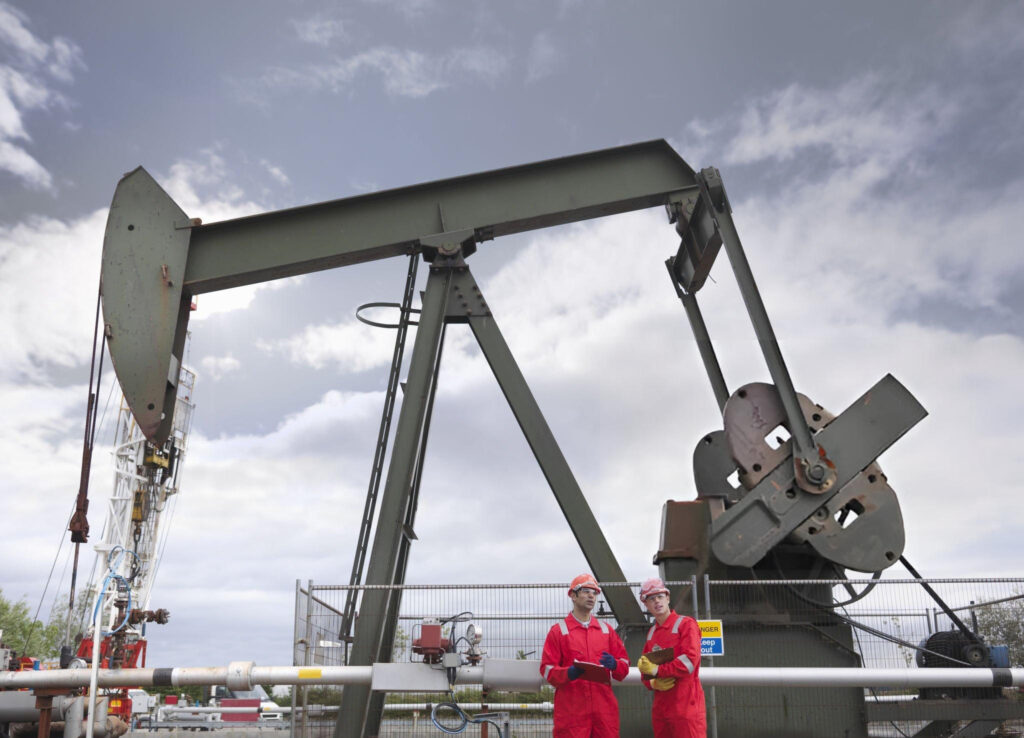Regular inspections play a vital role in maintaining workplace safety. Conducting frequent inspections has several compelling reasons, one of the most important reasons being it helps foster a culture of safety within the organization. When employees witness management investing time, effort, and resources into frequent workplace inspections, it instills a sense of loyalty and solidarity in them.
They realize that their employer is actively ensuring their well-being and safety, and that encourages them to be committed and involved with their organizational success.
In fact, regular inspections also encourage worker involvement in creating a safe work environment. By involving them in the inspection process, employees become more engaged in the safety of their workplace and the well-being of their colleagues.
This increased participation cultivates a sense of ownership and responsibility, which in turn, motivates them to prioritize their own safety and contribute to the safety of their coworkers.
The success of a business in keeping employees engaged often correlates with its commitment to conducting regular workplace inspections and addressing any identifiable hazards. A company that genuinely values its human resources and takes proactive measures to maintain its safety is more likely to have a motivated and productive workforce. In today’s post, we will discuss the role of regular inspection and emphasize its significance in maintaining workplace safety.
What are Workplace Safety Inspections?
The primary goal of health and safety inspections is to keep accidents, injuries, and other incidents at bay in the workplace. These inspections are proactive measures taken to ensure that the work environment remains free from potential hazards that could put the safety and well-being of employees at risk. By thoroughly examining the workplace, safety inspectors can spot any potential hazards and take necessary actions to eliminate or neutralize them, hence, significantly reducing the risk of accidents and other unfortunate events.
Moreover, health and safety inspections are not solely focused on preventing injuries or fatalities among the staff. They bring many other notable benefits to your company. For instance, a safe work environment has a positive impact on employees’ morale and productivity, leading to increased job satisfaction and lower absenteeism rates.
Furthermore, companies that prioritize the health and safety of their employees tend to build a good reputation and are more likely to attract and retain top talent. All in all, investing in health and safety inspections is vital for any business striving to establish a safe work environment and achieve long-term success.
The Role of Regular Inspections in Workplace Safety
Regular inspections play a crucial role in maintaining workplace safety for several reasons:
Saving Costs
Performing safety inspections within a company is a wise decision that can ultimately lead to cost savings. While conducting these inspections may require time, long-term commitment, and financial resources, it is a proactive step that helps a business identify potential issues before they escalate into major problems. By thoroughly inspecting each machine, equipment, and asset, it becomes easier to spot flaws and faults that could potentially cause accidents down the line.
This not only ensures a safe workplace but also prevents the need for more expensive measures, such as repairing or replacing an entire machine. The importance of regular safety inspections, therefore, cannot be emphasized enough as they significantly contribute to long-term cost savings.
Employee Well-being and Awareness
Regular inspections are a vital component in ensuring and enhancing employee safety and awareness within the workplace. These inspections serve as a means to identify and mitigate potential hazards, thereby, safeguarding workers from accidents and injuries. Furthermore, they play a crucial role in ensuring the safety and reliability of the equipment used by employees regularly, enabling them to do their jobs without compromising their well-being.
Moreover, regular safety inspections have the added benefit of raising employee awareness regarding potential dangers in the workplace. By actively engaging in these inspections, employees are reminded to remain vigilant and exercise necessary precautions to prevent accidents from happening.
When coupled with comprehensive health and safety protocols, the impact of safety inspections is significantly amplified. Such procedures cultivate a culture of safety and security, fostering a sense of accountability and concern among employees toward their own welfare as well as that of their colleagues.
Increased Productivity
Health and safety inspections involve a meticulous examination of machinery and other equipment to ensure their optimal condition. These inspections serve a dual purpose: detecting issues at an early stage and enhancing productivity. Regular checks and maintenance tasks are instrumental in preventing machine failures and consequential downtime, which can have adverse effects on overall productivity.
By conducting periodic inspections, companies can proactively identify potential issues and promptly address them before they spiral into more significant problems. As a result, inspections yield tangible benefits such as improved equipment performance, fewer breakdowns, and reduced time spent on equipment repairs.
These advantages directly contribute to increased productivity and enhanced profitability, rendering inspections a valuable and worthwhile investment for any company seeking to optimize operational efficiency and financial success.
Identifying Specific Issues
When every piece of equipment undergoes assessment, it becomes easier to identify particular issues that might otherwise go unnoticed. A targeted inspection focused on safety hazards and potential flaws can help identify problems more efficiently and reliably. By catching issues that may have been overlooked during the daily workflow, safety inspections can help resolve these hazards before they lead to accidents or financial losses.
This is why regular safety inspections are imperative in every workplace, as they help keep workers safe and reduce the risk of accidents. Furthermore, identifying specific issues can also help organizations save money by avoiding costly downtime and repairs caused by faulty equipment. As such, it is important to ensure that every machine undergoes regular inspection to maintain a safe and efficient workplace.
Ensuring Compliance
Legal matters can be time-consuming and expensive to deal with. That’s why it’s important to take the right steps and stay ahead of them. Regular inspections are essential to maintaining a safe and healthy workplace, which is an important aspect of compliance. By following health and safety regulations and using an approved checklist, you can make sure your company meets all kinds of state-wide and national standards.
Regular inspections not only help avoid legal problems but also reduce the chances of accidents and injuries at work. By making inspections a priority, your organization shows its dedication to safety and compliance, safeguarding the well-being of your employees.
Different Kinds of Safety Inspections
There are various types of safety inspections conducted to ensure compliance with regulations, standards, and best practices across different industries. Here are some common types of safety inspections:
Fire Safety Inspection
Fire safety inspections play a vital role in keeping our homes and workplaces safe. Fires remain one of the most significant risks in these environments, making inspections absolutely essential to prevent them from happening. Electrical malfunctions and operational mistakes are the common causes behind devastating fires that can cause injuries and even fatalities.
The primary objective of fire safety inspections is to avoid such incidents altogether or at the very least, minimize their potential damage. It should be standard practice to have fire extinguishers readily available in every workplace. By conducting regular inspections focused on fire safety and ensuring the presence of adequate fire extinguishers, we can safeguard the well-being of everyone. Investing in fire safety inspections is, in fact, an investment in the safety and protection of our staff, customers, and others who visit your premises.
Electrical Safety Inspection
Electrical safety inspection is a crucial aspect for companies that rely heavily on electronic equipment to run their business. It ensures the smooth functioning of all machines and equipment that run on electricity, which is essential for the day-to-day work operations and the safety of all employees. As a professional, it is important to understand that electrical safety inspection encompasses not only computers and chargers but also lighting fixtures and other ordinary equipment.
With a thorough electrical safety inspection, all potential hazards and risks can be identified and mitigated, preventing any untoward incidents that could harm employees or disrupt business operations. Therefore, investing in an electrical safety inspection is a wise decision for companies to ensure their employees’ safety and the smooth running of their business.
Occupational Health and Safety (OHS) Inspections
Occupational Health and Safety (OHS) inspections are a crucial aspect in maintaining a safe workplace that ensures the health and welfare of the people at work. These inspections are all about thorough assessment of all aspects of workplace health and safety programs, policies, and procedures. The ultimate goal is to identify and mitigate potential risks and hazards before they pose a threat to employee safety.
During OHS inspections, trained inspectors meticulously evaluate compliance with OHS regulations, record-keeping practices, training programs, hazard communication, and incident reporting. They’re like safety detectives, on the lookout for any possible violations and ensuring that all necessary safety measures are in place. They also ensure that the policies and procedures meet the legal requirements set by relevant regulatory bodies.
In addition to meeting legal obligations, OHS inspections also play an important role in cultivating a safety-centric culture within the workplace. By proactively identifying and addressing potential risks and threats, employers create an environment where employees feel protected and cared for.
Construction Site Inspections
Construction site inspections play a significant role in prioritizing safety throughout all construction activities. Their purpose is to identify and address potential safety risks associated with construction work. These inspections focus on ensuring that appropriate safety measures are in place for critical tasks like scaffolding, fall protection, excavation safety, heavy machinery operation, and electrical systems. Their primary aim is to ensure compliance with safety regulations specific to the construction industry.
Regular construction site inspections are essential for companies to guarantee a safe and secure working environment for their employees. By conducting these inspections, businesses prioritize the well-being of their workers. Moreover, they also proactively avoid any legal or financial consequences that may arise due to non-compliance with safety regulations.
The ultimate goal of construction site inspections is to foster a culture of safety where the risks associated with construction activities are identified, assessed, and effectively mitigated. By continuously monitoring and improving safety measures, construction companies and contractors can create an environment where workers can work with confidence, knowing that their well-being is a top priority.
Food Safety Inspections
Food safety inspections are absolutely necessary within the food industry, as they ensure that food establishments maintain the necessary standards for safe food handling and preparation. Whether it’s a fast food restaurant or a bustling food processing plant, these inspections are conducted regularly to verify compliance with sanitation practices, employee hygiene, pest control measures, and strict adherence to food safety regulations.
Dedicated food safety inspectors play a crucial role in safeguarding consumers from foodborne illnesses through meticulous monitoring and evaluation of food establishments. They approach their work with the utmost professionalism, paying close attention to every detail and demonstrating an unwavering commitment to upholding the highest standards of food safety.
During these inspections, inspectors carefully assess various aspects, such as the temperature control of food storage facilities and the cleanliness of kitchen equipment. Their primary objective is to ensure that food establishments operate in a manner that prioritizes safety and promotes the health and well-being of everyone involved.
Final Thoughts
Workplace safety should be a top priority for every organization. It’s not just about protecting employees from injuries; it ensures business continuity and success. A secure work environment promotes well-being, reduces accidents, and avoids lost workdays, medical expenses, and legal issues.
Regular safety inspections play a vital role in maintaining a safe workplace by identifying and addressing potential hazards proactively. They go beyond mere compliance; they demonstrate a solid commitment to employee welfare.
Take advantage of an enterprise platform focused on reducing OSHA-reported incidents through onsite pre-job briefings, safety observation monitoring, and reporting tailored to your industry. Reach out to learn more about Field1st or to request a demonstration.





